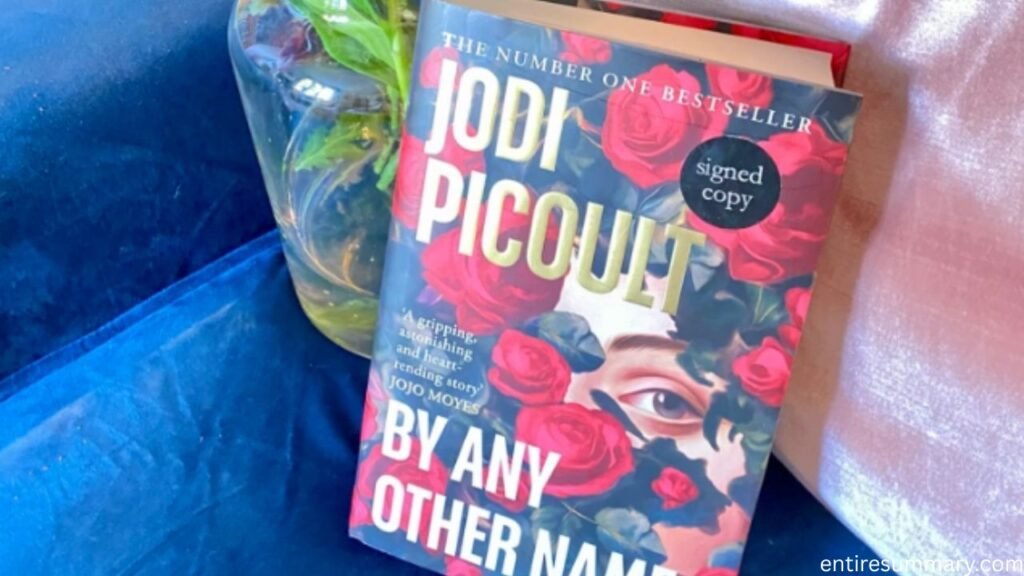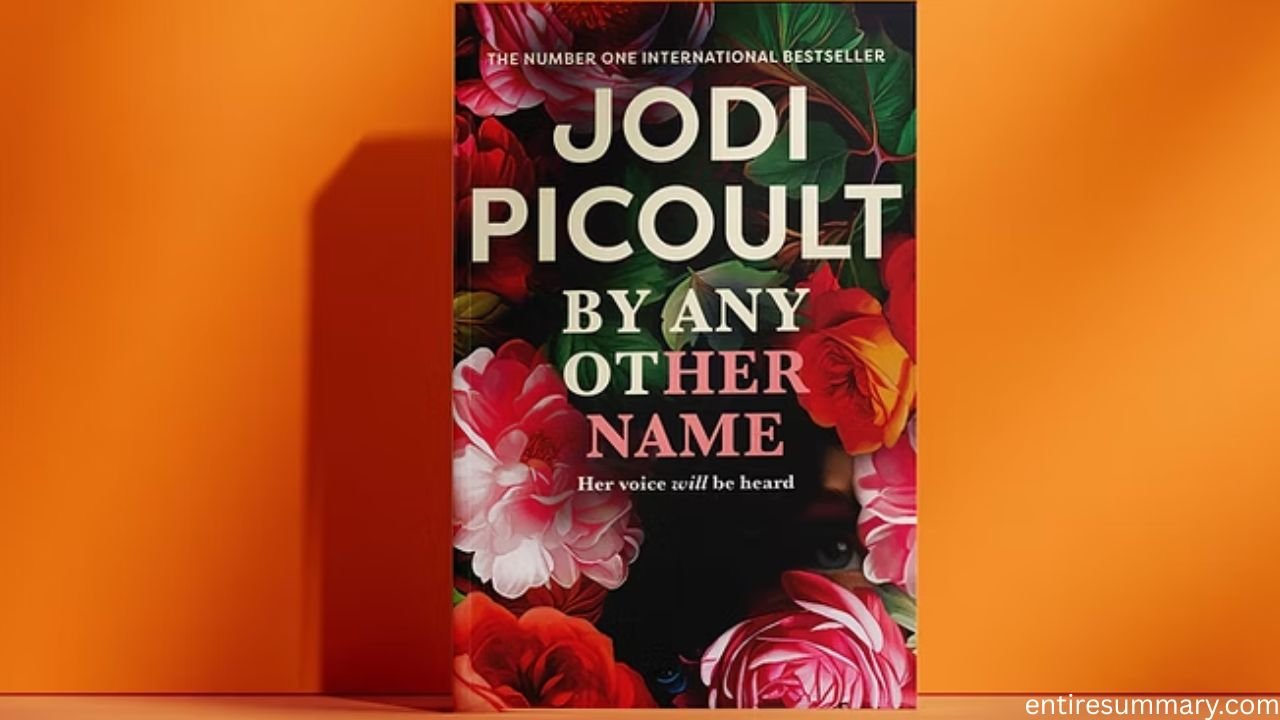By Any Other Name by Jodi Picoult is a historical fiction novel that runs in two timelines. It explores the life of Emilia Bassano in Elizabethan England and her modern descendant Melina Green. The book asks big questions about authorship, identity, and what it means for a woman to be heard.
First Half Summary (Key Events)
We begin in 1581 England, with Emilia Bassano, a young Jewish woman born into a family of musicians and artists. After her mother dies, Emilia becomes a ward of a wealthy countess. She receives a rare education for a girl of that era: she studies poetry, music, languages, and storytelling.
Emilia is forced into difficult circumstances. At a young age she is arranged to be the mistress of Henry Carey, Baron Hunsdon, who is an influential man in charge of the Lord Chamberlain’s duties, which includes oversight of theater in London. Through her connection to court, theater, and those who write and perform plays, Emilia begins to dream of contributing her own voice. But social rules, gender norms, and patronage limit her. She cannot publish under her own name or speak publicly as a playwright.
Meanwhile, in the present day, we follow Melina Green, an aspiring playwright in New York City. She is a descendant of Emilia Bassano. Melina works on a play inspired by Emilia’s experiences. She faces the sexism and obstacles of the modern theater world. Her work is dismissed, critics ignore her, and opportunities are few.
Melina’s personal life also carries weight. She’s haunted by critical setbacks, self-doubt, and the feeling that her voice is invisible. Her best friend and her mentor play roles in helping and challenging her. The dual timelines begin to reflect each other: Emilia and Melina both must decide how far they are willing to go for recognition, and whether using someone else’s name or hiding their identity is a price worth paying.
Also read: /john-c-maxwell-101-leadership/
Emilia’s journey in the past intensifies when she becomes entangled with other writers and figures of the Elizabethan literary world. She forms relationships with people like Christopher Marlowe, and uses her education and wit to compose poems and plays, even as she struggles with the moral and social consequences of being a mistress, restricted by patriarchal norms. She also witnesses the realities of power: how patronage, court politics, and reputation govern what is possible for a woman.
As both women go deeper into their creative worlds, the question becomes central: is it enough to have created something great if history forgets your name?

Second Half Summary (Climax to Ending)
In the second half, Emilia’s life in Elizabethan England becomes more complicated. She falls in love, becomes pregnant, and is married off under difficult circumstances. Her marriage is abusive and disappointing. She is forced to navigate heartbreak, loss, and betrayal, but she continues writing. She sacrifices public acknowledgment of her work so that her voice, even if hidden, survives. She secretly arranges for a male actor—William Shakespeare in Picoult’s fictional account—to present her plays under his name. Thus she gives up direct credit for the chance that her ideas, stories, and poetry will live on.
Back in present day, Melina Green has submitted her play that’s based on Emilia’s life and work. Because of gender bias, she uses either a pseudonym or someone else’s name to get it considered for performance. This raises moral and personal conflicts. She worries about being discovered, about what it means to hide her identity, and how far she must compromise.
The climax involves Emilia’s increasing risk: her status at court, her relationships, her children, and her health are all under pressure. She faces disease (the plague), social stigma, and the looming threat of being erased not just from authorship but from history itself. Meanwhile Melina faces criticism, betrayal, and the challenge of whether to accept success if she must continue hiding her voice.
In the final portion, the two stories converge in theme if not physically. Emilia dies relatively unknown, but with her legacy intact through hidden works and poems. She is remembered in some circles, but many of her creations are attributed to others. Melina, on the other hand, achieves a measure of recognition, but the question of authorship and identity remains bittersweet. She does get to tell Emilia’s story. She also confronts the cost of visibility: critics, public opinion, and personal relationships all shift once her identity behind the work is known.
The ending asks readers to consider what truth and recognition really mean. It suggests that being the true author matters, but sometimes the survival of the story, its impact, and the courage to create are equally important.

Conclusion
By Any Other Name shines as a moving reflection on the costs of being creative when society limits your voice. Through Emilia Bassano, Jodi Picoult imagines a life of brilliance hidden behind constraints of gender, class, and power. Melina Green shows us that many of those constraints remain, even if they are more subtle.
The novel does not give a perfect, tidy resolution. Emilia’s name is obscured in history in Picoult’s narrative, and Melina must wrestle with her own compromises. Yet the book feels hopeful. It shows that progress is possible, that voices once silenced can echo centuries later, and that the act of creating, even when uncredited, has value.
What makes the book significant is its dual timeline structure. It allows the reader to see how things have changed—and how often they haven’t. The book asks: when you create something meaningful, must you insist on credit, or can you be satisfied knowing it matters, even if your name is buried?
For anyone interested in women’s history, Shakespeare’s authorship theories, or stories of artistic struggle, By Any Other Name offers a rich, emotional ride. It reminds us that being seen is powerful—and that sometimes, being heard quietly can still transform.
FAQs
1. Who is Emilia Bassano?
She is a historical figure in the 1500s and a poet. Picoult’s novel imagines her as a playwright who might have written works attributed to Shakespeare.
2. Who is Melina Green?
Melina is a modern playwright, a descendant of Emilia, who writes a play based on Emilia’s life. She struggles with gender bias and recognition in contemporary theater.
3. What are the main themes?
Authorship, gender inequality, identity, historical erasure, legacy, and courage.
4. Does the book prove Emilia Bassano was Shakespeare?
No. The novel is fictional. It presents a theory and reimagining, but it does not claim proof. It uses fiction to explore what might have been.
5. What is the dual-timeline structure?
It alternates between Emilia’s life in Elizabethan England and Melina’s life in present-day New York. The two timelines connect through themes and family heritage.
6. Why does Melina use a pseudonym or someone else’s name?
To get her work recognized in a field where women still face bias. She fears that her work will be dismissed if people know a woman wrote it.
7. Is there romance in the story?
Yes. Emilia has romantic entanglements and personal relationships in her timeline, including an affair and complicated marriage. These relationships affect her life, creativity, and emotional world.
8. How does the historical context affect Emilia’s story?
Very deeply. Social norms, gender roles, censorship, patronage systems, expectations about a woman’s place—all of these limit her choices and force her to hide her authorship.
9. What obstacles does Melina face?
Modern sexism, criticism from reviewers, being underestimated, limited access to opportunities, and the moral cost of hiding her identity.
10. How does the novel address Shakespeare?
It suggests that some works attributed to Shakespeare might have been written by Emilia. Emilia pays Shakespeare to front her plays. The novel uses historical gaps, literary theory, and fictional reimagining.
11. What is Emilia’s relationship with power and patronage?
She depends heavily on patrons to survive and write at all. But the power imbalance means she must compromise, hide, and sacrifice authorship for recognition.
12. How does Melina resolve her story?
Melina’s story ends with both recognition and compromise. She does manage to have her play seen and appreciated, but questions about authorship and identity linger.
13. What is the tone of the novel?
Reflective, ambitious, sometimes heartbreaking. It balances scholarly historical detail with personal emotional struggles.
14. Is it necessary to know historical Shakespeare scholarship to enjoy the book?
No. The book gives enough background for readers to follow the controversy. It’s accessible even if you haven’t studied Shakespeare. The emotional stories are what carry it.
15. Why did Picoult write this story?
To explore how women’s voices have been suppressed, to imagine unrecognized artists, and to show that even now, parts of that suppression still remain. She wants readers to reflect on what gets remembered and what gets forgotten.

